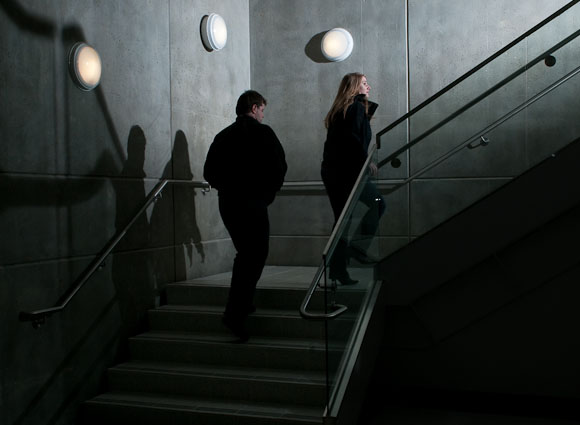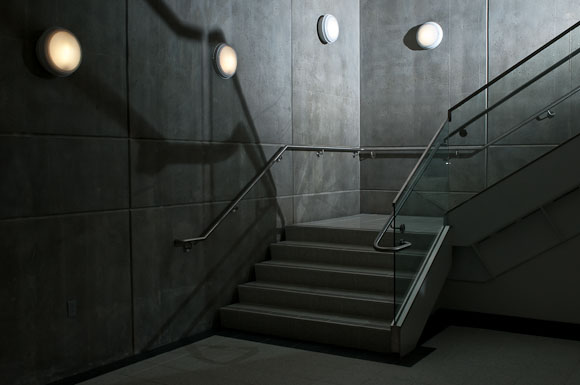
For the past few days I’ve been peering over at the other side of the fence to see what Nikon has to offer with regard to off-camera lighting. I had heard about CLS–the Creative Lighting System–for some time, but few here at Mizzou seem to be using it. Finally, I just decided to check it out for myself, so I borrowed a D300 and an SB900 Speedlight and discovered how ridiculously easy it is to control the flash unit from the camera in either fully-manual or ETTL modes. From the perspective of a Canon user, it’s just sick.
More after the jump…
All it takes to make a camera like the D300 (or the D70, D80, D200, D700, or some others, too) control a flash like the SB-900 wirelessly is to go into custom functions and make the pop-up flash a “Commander.” Scott Kelby put together a very simple-to-follow video on how CLS works on his “DTown” Web site. It’s a little too much of a Nikon-fanboy-ish Web site for my own taste, but the information is great.
Essentially, the pop-up flash emits a coded light “pulse” that tells the flash how to behave. For instance, you can tell it to fire at 1:128 power on one frame, and then adjust it back up to 1:1 for the next shot, all from the back of the camera. That the TTL functions (positive and negative flash-exposure-compensation) also works this way is less surprising. Even Canon cameras and flashes can do this with the ST-E2 transmitter. But the ST-E2 cannot control Canon speedlites in manual mode, making this eye-opening for me.
So, in my first days of experimenting with this new functionality, I found that some of my best images came from a blending of my interest in architecture with my new zeal for off-camera flash (for which I blame Strobist and my MU Advanced Techniques course).
The results were the image above, purposefully exposed to make the unlit portions of the scene very dark, as well as the image below, exposed to allow more of the lower level show up. Note that both exposures were made to overpower the existing light (at the D300’s max sync speed of 1/250 sec.) because I wanted to control how the light played out in the stairwell of the Reynolds Journalism Institute on the MU campus. If I had exposed this normally, it would simply have been an evenly-lit, boring photograph. I could still have added some interest with the flash, but not nearly as much as I did by making the flash the only light.
I’m looking forward to playing with the Nikon system some more–next time I’m checking out two SB-900’s. Watch out, world.

